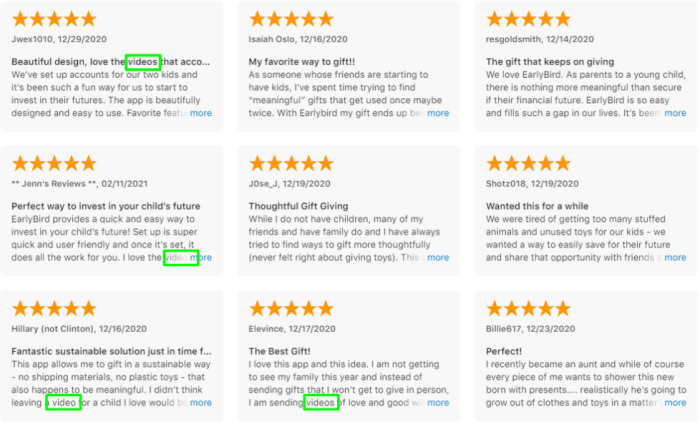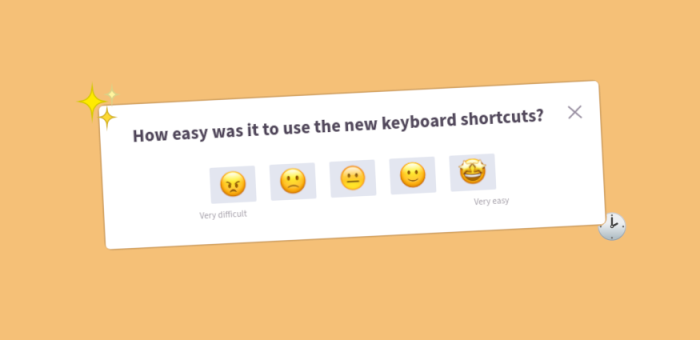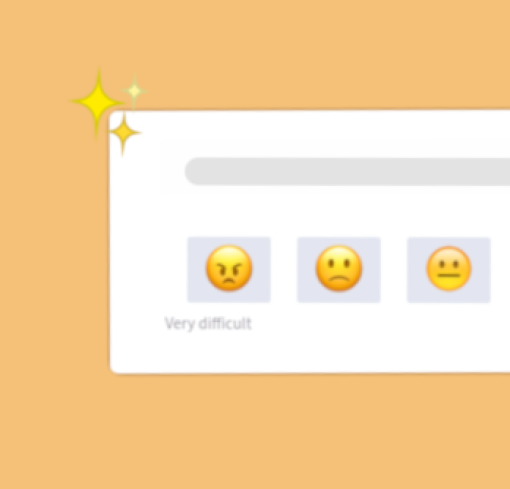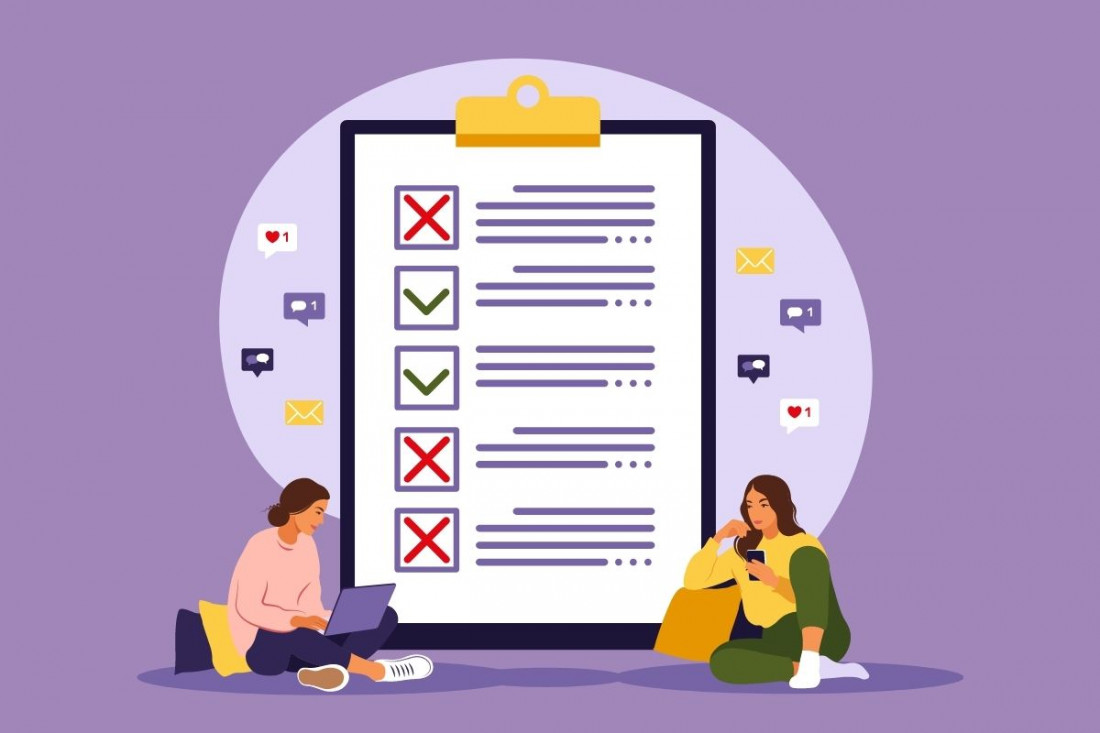It’s no wonder that product marketers are constantly looking for ways to get the best information about their customers. Customer data and feedback are the currency of any product marketer, allowing them to develop new products that better address customer pain points. The more specific and contextual that feedback is, the more valuable it becomes.
There’s an efficient way to collect feedback on how to improve your products to meet customer demands: in-app customer needs assessments. These Microsurveys give you helpful, contextual feedback for your product dreams.
To understand how to best use Microsurveys and other in-app customer needs assessments, we’re taking a deep dive into how to gather and use product feedback on customers. In the end, you’ll walk away with a clear understanding of how to uncover and address your customers’ biggest pain points. Let’s get started.
What is a customer needs assessment?
A customer needs assessment seeks to build a detailed picture of exactly what a customer desires from your products or services.
Product marketers and other teams can use this information to develop better products, marketing campaigns, and customer service strategies.
There are two keys to understanding customer needs:
Figuring out the customer’s main problems
Determining how the customer expects your product to solve that problem
Let’s take a closer look at how to determine these two categories for your customer base.
What are your customers main problems?
You may have an answer for what problem you’re trying to solve, but it’s important to make sure that your customers agree with you.
To best answer this question, it’s helpful to go beyond the obvious answers. For instance, it’s clear that people using task management software are trying to stay organized or that people using a rideshare app are looking for a means to get around.
But a customer needs assessment should seek to find out what key problems influence your audience in choosing you over a competitor. Does your product provide more convenience? Is it more affordable?
Think about what elements of your product solve a more niche problem – one your competitors may not necessarily address. And this is one of the basic principles that should be followed in order to create a successful product.
What are your customers' expectations of your product?
The other half of the customer needs equation is what the customer expects of your products. These expectations could be formed due to company branding, marketing initiatives, or new features from competitors that change expectations about your products.
For instance, if a skincare line boasts cruelty-free products in their marketing campaign but the product pages don’t confirm this, customers may be less inclined to buy.
By understanding that customers expect these product claims to be clear in all product information, the company can update its website to align with expectations. The distinction between customer problems and customer expectations is an important one because it helps product marketers align reality to the customer’s expectations.
Any disparities between how the customer expects your product to solve their problem and how your product actually solves that problem can be turned into action items for improving your customer experience.
The importance of surveys in customer needs assessments
Now for the big question: how can product marketers achieve this level of nuance in their customer needs assessments?
In short: Microsurveys.
You need to give your customers a way to speak directly to you about what they need, want, and expect from your company.
Historically, customer needs assessments have relied on interviews and other qualitative research tactics, such as reading customer reviews or social media mentions. As customer bases grow, particularly with the rise of online and app-based shopping, it’s become much more difficult and time-consuming for product teams to conduct this kind of needs assessment.
For instance, take these app reviews from EarlyBird, an app that lets you leave financial gifts and video messages for a child. It’s clear from the reviews that the video feature is popular – you can see the mentions of this feature highlighted in green below:

(Source)
But this approach makes it difficult to parse out elements that customers may have issues with – elements that the product team can address to improve the customer experience.
Surveys make it easier to gather information from a large number of customers at once. Well-designed surveys offer plenty of open-ended questions that allow for the feedback product marketers need.
But traditional surveys are increasingly a less-than-ideal way to gather information about what customers need. When they’re sent by email or opened long after a customer has used the product, the customer may not be actively thinking about the product anymore, leading to more vague and less helpful feedback.
How can marketers overcome this problem and capture contextual, relevant feedback about their product? In-app surveys.
Customer need assessments and in-app surveys
Every product marketer can benefit from in-app surveys. These single question surveys allow you to collect feedback on specific, targeted features of your product or app, while the customer is actively using it.
This approach allows you to collect a higher volume of more accurate and detailed feedback from customers. Plus, after the initial setup, you’re essentially collecting feedback constantly and automatically, giving you a lot of data to work with after very little effort.
Get feedback when users are engaged in-app
The beauty of in-app surveys lies in your ability to tie questions to specific actions or features within the app. For example, if you are rolling out a new automation feature in a task management app, you might ask users to rate how easy it was to set up an automation once they use the new feature for the first time.
Then, you can set up a separate Microsurvey to ask how they liked the new automation feature after it’s been triggered 20 or 50 times. Tying survey questions to specific actions and asking those questions in real-time gives you accurate insight into your users' feelings as they use your product.
Ask the right questions
The key to asking good questions in your in-app surveys is simply to be specific.
While there may be a time and place for asking broad questions about your products, customer service, and overall customer experience, you’ll get the most useful feedback when you hone in on a feature or aspect of your product that you want to know more about.

Your Microsurveys should be:
Tied to a specific product feature
Answered via a simple rating scale (although different questions can have different scales)
Able to capture comments and open-ended feedback about the feature
You may need to test and adjust your Microsurveys during the rollout phase to make sure you’ve phrased and placed them for optimal response rates.
Key metrics for in-app surveys
Setting up Microsurveys is one thing, but processing survey feedback is quite another. To make it as easy as possible to process and use your survey data, keep these metrics in mind as you set up your survey strategy:
Response rate: The percent of customers that answer your survey, out of all those who were asked
Customer effort score (CES): A way to measure how easy it was for a customer to use a product or feature, typically on a scale of “very easy” to “very difficult”
Net Promoter Score (NPS): A way to measure customer satisfaction on a scale of 1-10, with the highest scorers considered loyal, outspoken customers
Many product marketers track CES and NPS as product or business-wide scores, but for the purpose of Microsurveys, it’s critical to calculate those scores for specific features. This gives more precise and useful feedback for the product marketing team.
The benefits of in-app customer needs assessment in product marketing
In-app customer needs surveys solve a lot of the problems associated with traditional surveys – those sent via email or other communication. They’re a better way to get more useful feedback from customers. Here are a few benefits product marketers reap when they use in-app surveys to assess customer needs:
Feedback on specific product features: By tying survey questions to specific features, marketers can identify exactly what’s working – and what’s not.
Highly accurate insight into customer pain points: Since Microsurveys trigger while the customer is actively using the product, they’re capturing your customer’s exact mindset. They're far more accurate than a survey that asks about an experience from hours or days ago.
More data to work with: Microsurveys have a higher response rate since they take just seconds to answer and don’t require visiting a new web page. This gives the product team a large sample size to work with.
Faster response times: Since in-app assessments are tied to specific features, you can roll out a Microsurvey at the same time as a new feature. That means your product team gets feedback the moment a customer uses the feature for the first time. That’s a lot faster than creating and sending a traditional survey separately.
24/7 user feedback: You’ll continue to collect feedback as long as your Microsurveys are active, with virtually no effort on your part. You’ll have more data and more time to work with it.
Ability to test survey questions more easily: Each question in your Microsurveys can be answered independently, you can modify or swap questions without needing to redo and resend an entire survey. That means you optimize your survey questions faster, bringing in even better feedback than before.
Tracking and analysis is also a key part of leveraging Microsurvey data in product marketing. Once you have your survey responses and feedback metrics, you’ll need to analyze this data to put it to good use.
It’s smart to incorporate your customer feedback into a quality management system to best utilize the data you’ve collected. With this system, you can incorporate customer feedback into your product development process as you receive it, providing a continuous stream of possible improvements.
In addition to this system, you’ll want to continue tracking the key metrics as outlined above to monitor the efficacy of your Microsurveys.
Assess your customers' needs with Microsurveys
In-app Microsurveys are the customer needs assessments of the future. They provide product marketers with specific, targeted feedback that allows them to quickly and precisely address customers’ true pain points. As a product marketer, you can leverage this new technology to improve your customer experience across the board.

On-Demand Webinar: How to Use Microsurveys
Equip your team with a modern approach to user feedback that powers product development ⚡
This article was contributed by Stefan Debois. Stefan is the founder and CEO of Survey Anyplace, an online software tool to create engaging surveys, assessments, and personalized reports. Besides kitesurfing, Stefan is passionate about using technology to build professional relationships with people at scale.




